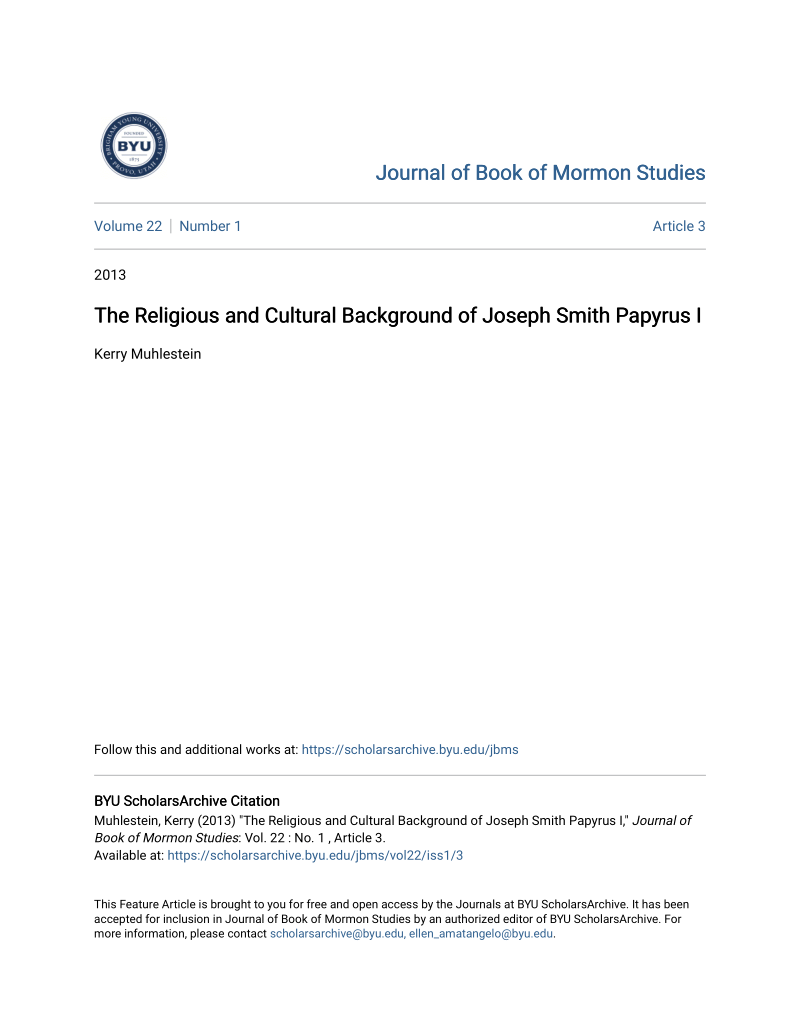Muhlestein explains background of JS Papyri and discusses ways JS's interpretation of Facsimile 1 make sense from an Egyptological perspective.
- Type
- Academic / Technical Report
- Source
- Kerry Muhlestein LDS
- Hearsay
- DirectSecondary
- Reference
Kerry Muhlestein, “The Religious and Cultural Background of Joseph Smith Papyrus I,” Journal of the Book of Mormon and Other Restoration Scripture 22, no. 1 (2013): 20–33
- Scribe/Publisher
- Neal A. Maxwell Institute for Religious Scholarship
- People
- Kerry Muhlestein
- Audience
- Reading Public
- Transcription
Throughout its history, ancient Egyptian religion showed a remarkable capacity for adopting new religious ideas and characters and adapting them for use in an already existing system of worship. This process continued, and perhaps accelerated, during the Groco-Roman era of Egyptian history. Egyptian priests readily used foreign religious characters in their rituals and religious formulas, particularly from Greek and Jewish religions. Religious texts demonstrate that Egyptian priests knew of both biblical and nonbiblical accounts of many Jewish figures--especially Jehova, Abraham, and Moses--by about 200 BC. Knowing this religio-cultural background helps us understand how the priest in Thebes who owned Joseph Smith Papyrus I would have been familiar with stories of Abraham.
- Citations in Mormonr Qnas
The B. H. Roberts Foundation is not owned by, operated by, or affiliated with the Church of Jesus Christ of Latter-day Saints.

